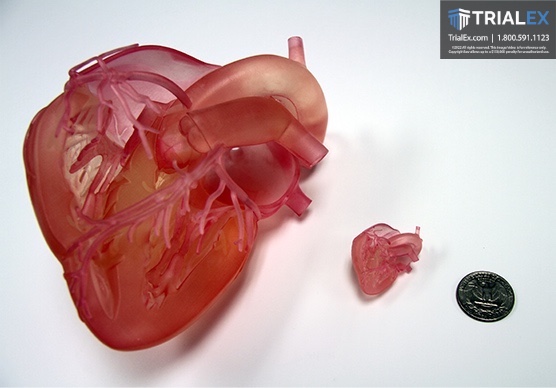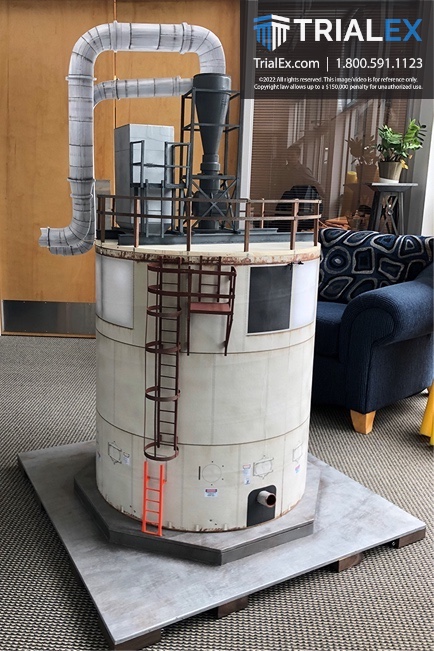3D Models
Scaled Models And 3D Printing
A courtroom model as a demonstrative exhibit can be utilized as an overall map of your case. In some cases, having a physical model left up during parts of testimony serves as a reference point and educational demonstrative. A 3D model allows for viewing multiple angles versus a computer animation that may only show the jury one angle for reference.

Custom 3D Model Final Print

Silicone Cystectomy 3D Model

Types Of Models
Stock Anatomical Models
Anatomy models are an effective educational tool for explaining human anatomy in a courtroom setting. These models are typically general anatomy anatomical models that give detailed insight into the human body. Some models may have separate pieces that can be removed to show deeper into the anatomy.
Custom 3D Printed Models
These models are created from 3D laser scanner technology like Faro, Pix4D Drone Scanning, etc., or created by a 3D animator. Many 3D printers can only print up to a particular size, which may be too small for courtroom use. However, one TrialQuest client wanted to show the actual size of an infant’s heart. TrialQuest 3D-printed the heart based on the infant’s CT images, allowing the jurors to hold the heart while an animation of the medical procedure was shown.

Physical Scaled Models
Hand-crafted physical scaled models are an accurate reproduction of a location or product. Examples of physical scaled models in the courtroom may be accident locations, buildings, products or typographical maps. These models may be created as a full-size reproduction or scaled down for easier courtroom use.
Graphics and models are not just for jurors. Judges and arbitrators need educational demonstrative exhibits as well. TrialQuest clients have used 3D models in hearings with judges, arbitrations, and mediations.






